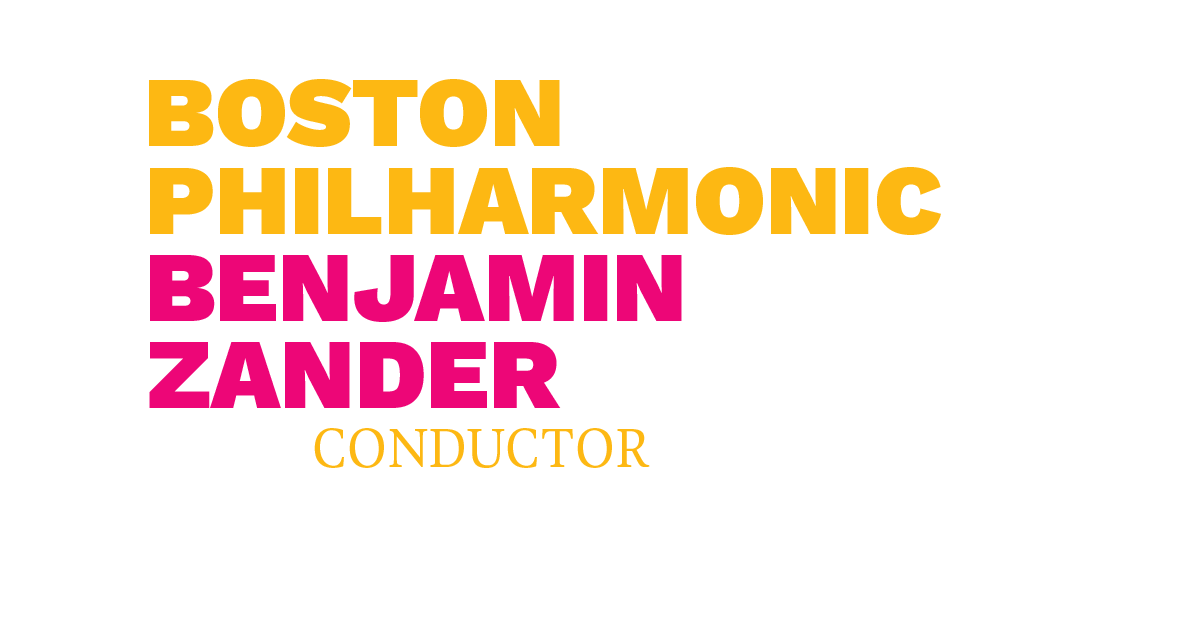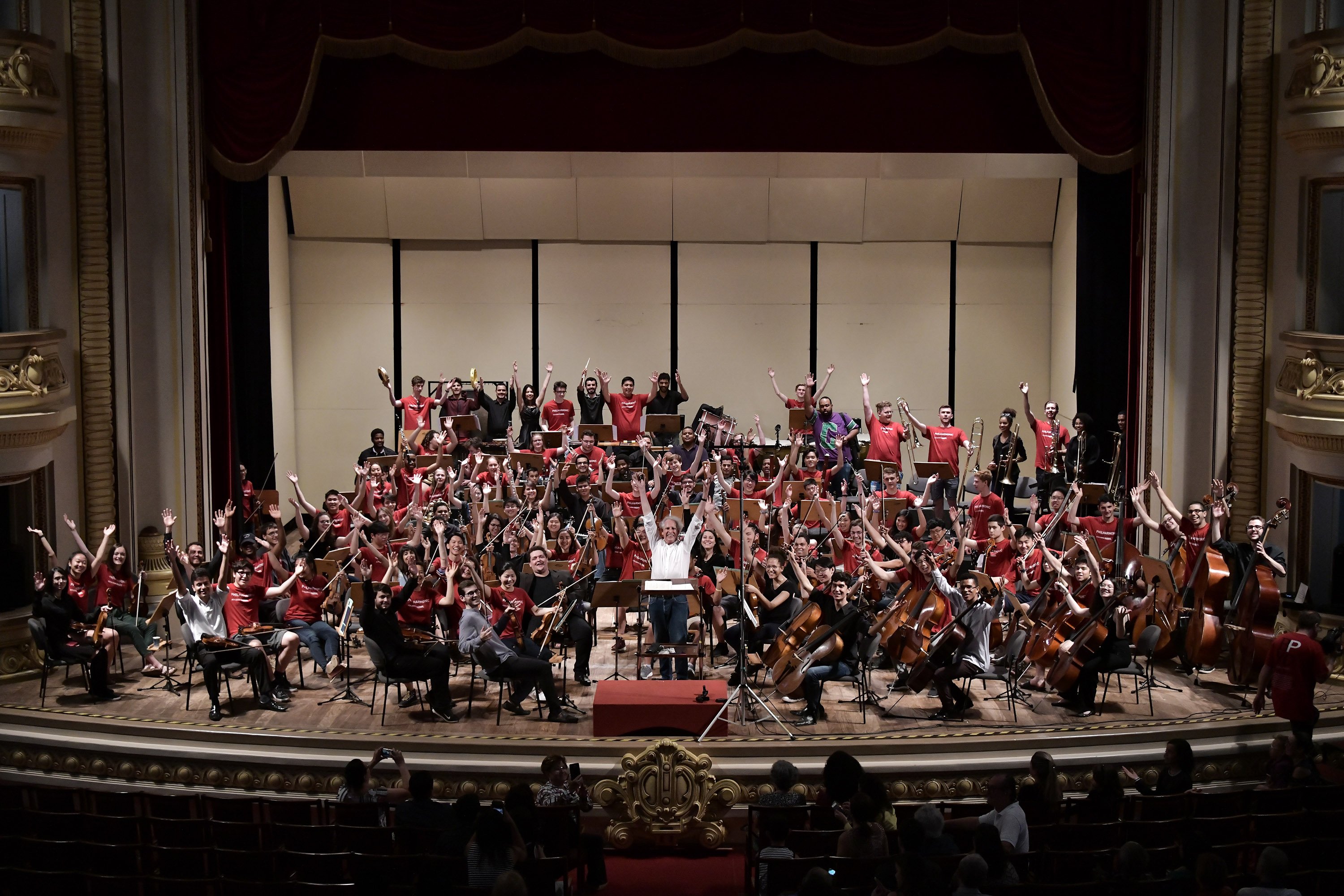
Boston Philharmonic Youth Orchestra 2019 Tour –Ribeirão Preto and Campinas
Ribeirão Preto, the fourth stop of the BPYO’s Brazilian tour, is, with a population of around 800,000, the smallest city we’re visiting. It’s nestled among rolling hills and sugarcane fields a four-hour-or-so drive north of São Paulo. Once at the heart of Brazil’s coffee trade, the city now is one of the country’s technology hubs, and also an educational center.
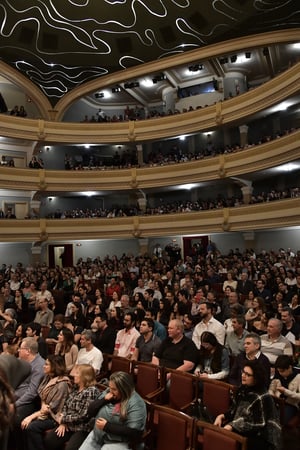 We arrived there Thursday afternoon and quickly took a shine to our lodgings, Hotel JP. It’s a lovely place set on a capacious plot of land that must take up a couple of square miles: everything’s broadly laid out. We were fast to take advantage of its pools, dining services, and other diversions (which included hammocks, a game room, and a sauna) as time was limited: there was an open rehearsal at 5:30 and concert at 8:30.
We arrived there Thursday afternoon and quickly took a shine to our lodgings, Hotel JP. It’s a lovely place set on a capacious plot of land that must take up a couple of square miles: everything’s broadly laid out. We were fast to take advantage of its pools, dining services, and other diversions (which included hammocks, a game room, and a sauna) as time was limited: there was an open rehearsal at 5:30 and concert at 8:30.
Both were held at the Theatro Pedro II in the center of town. There was a large turnout for the open rehearsal. The main floor was mostly full and the audience was an energetic one; afterwards, players from the orchestra and conductor Benjamin Zander mingled with the enthusiastic crowd.
Ribeirão Preto audience at Theatro Pedro II
For the concert, we had a packed house – and a really engaged one, at that. Anna Fedorova got something close to a rock star’s welcome when she took the stage: lots of cheering, whistling, and loud applause. And she played a Rach Two that lived up to those expectations.
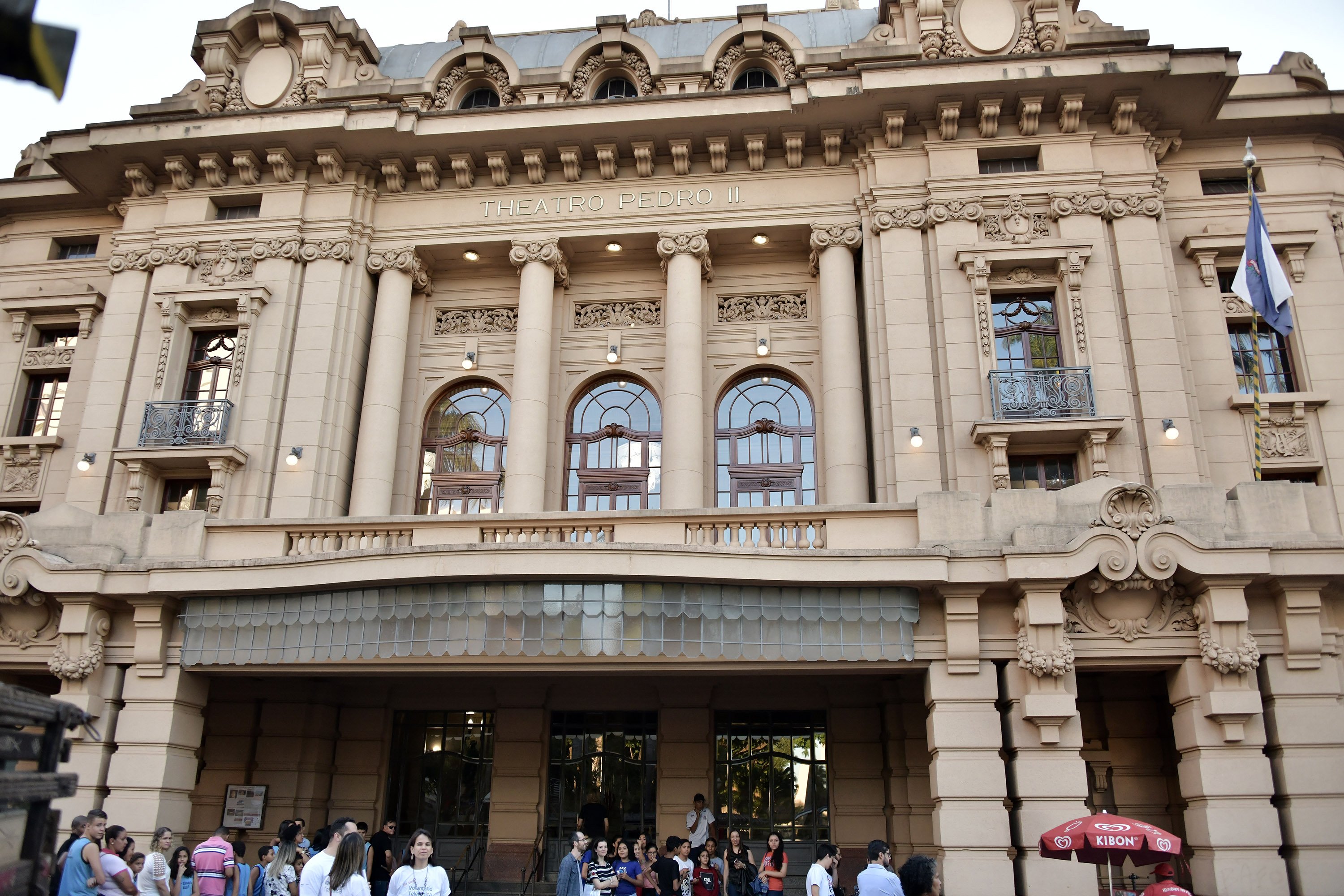
Theatro Pedro II in Ribeirão Preto
Following intermission, Zander led the orchestra in their fourth performance of the Shostakovich this trip. It was a tight performance – the amount of time the players have spent with the piece is showing in good ways – that was also recorded for posterity. Lots of cheers and applause followed, as did some spirited Sousa and noble Elgar.
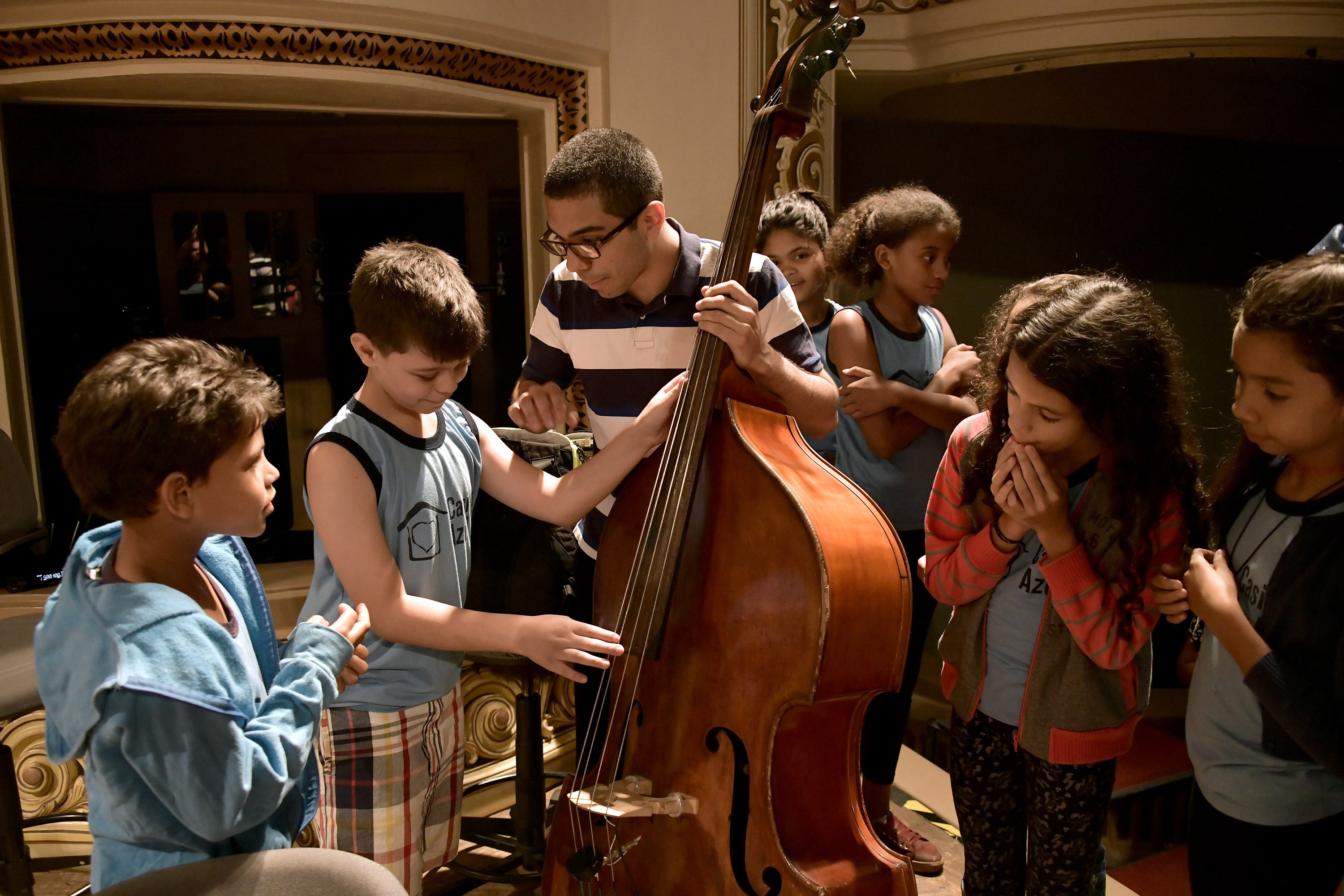
Bass player Luis Celis with young bass enthusiasts at Ribeirão Preto side-by-side
The next morning, we held a side-by-side for another healthy-sized audience: this time, most of the theater’s main floor was filled. They were, again, an appreciative crowd, dancing (or at least swaying) a bit to the first number, the famous samba “Aquarela do Brasil,” and also clapping along enthusiastically with The Stars & Stripes Forever.
Then the orchestra ran through “Nimrod,” rehearsed it a bit, played it again, and closed with one more Stars & Stripes – this one replete with a battery of Brazilian percussion instruments joining the fray. Let me just say this: you haven’t fully lived until you’ve heard Sousa played in Brazil with some local percussion flavor added to the mix. It’s raucous and brilliant.
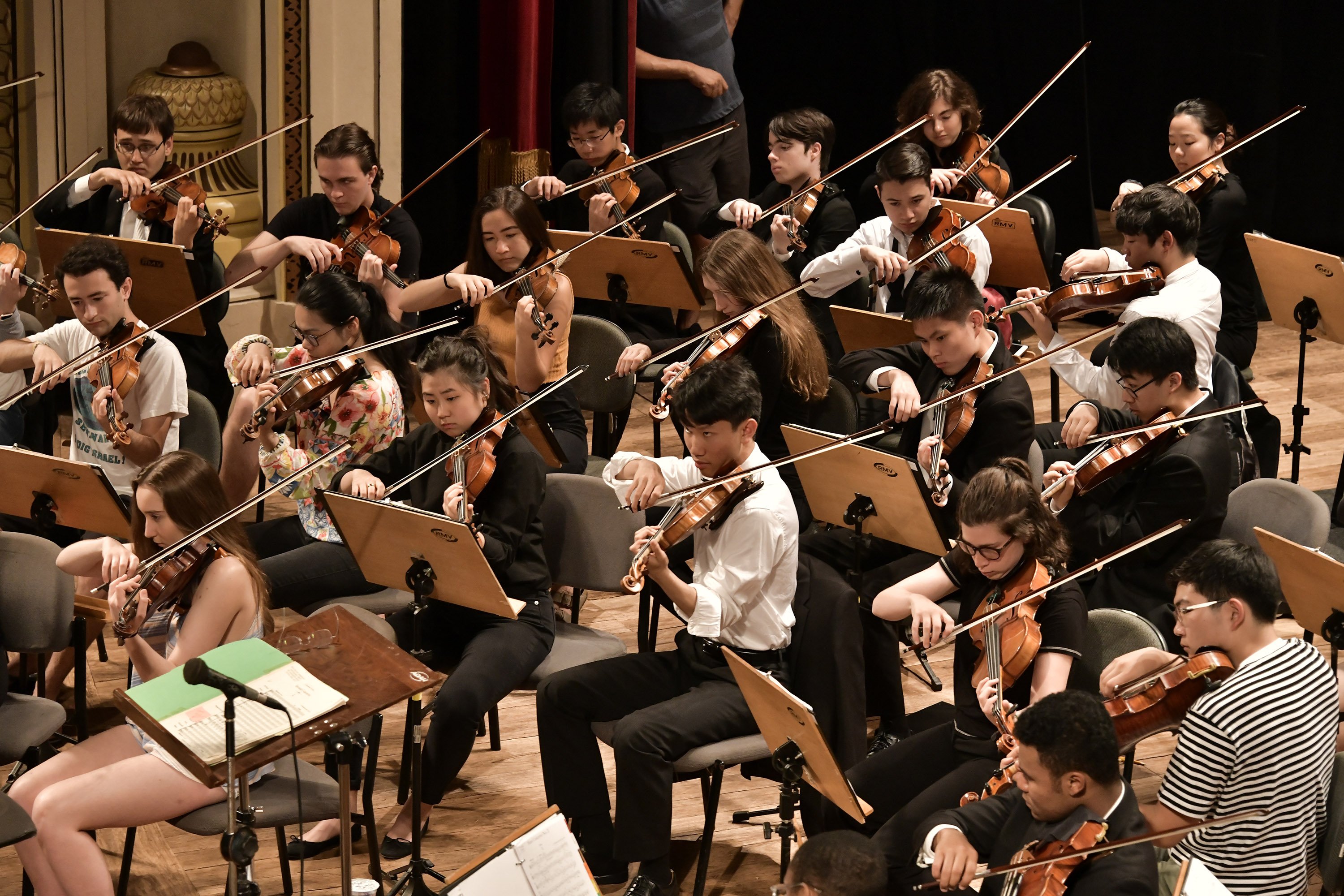
BPYO rehearsing in Ribeirão Preto
Before we headed back to our hotel, I had a chance to talk with Rubens Ricciardi, who had arranged and conducted the samba. Turns out he’s not a conductor by training but a composer who teaches at the local university and, in addition to orchestrating the samba, had provided a short, original instrumental introduction to the piece. I had been impressed with how gracefully and idiomatically it fit and complimented him on his work: good composers, like instrumentalists, know no borders.
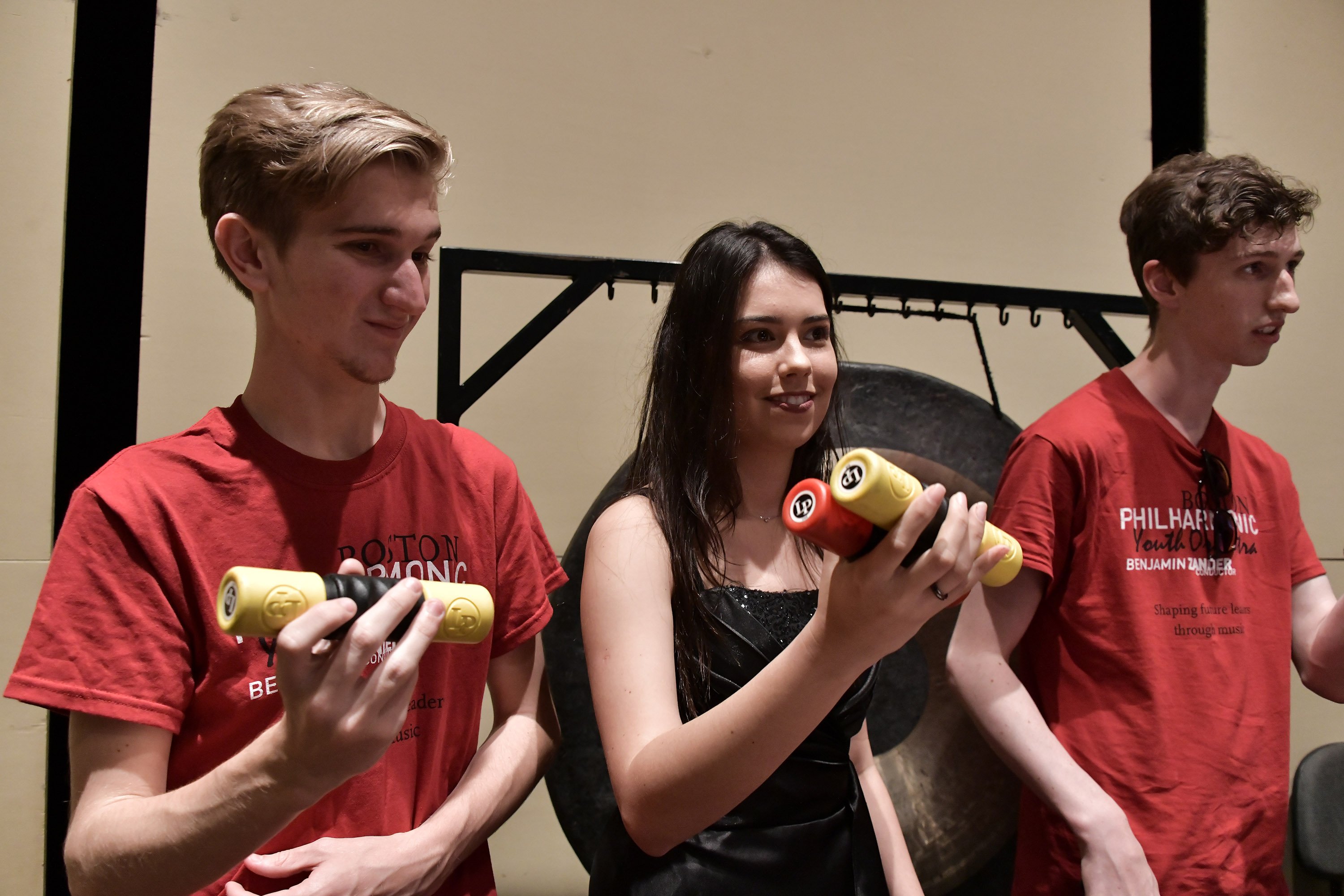
BPYO percussionists Chandler Beaugrand (left) and Dan Pooley (right) with their Brazilian colleague at the Ribeirão Preito side-by-side
Following the exchange, we had an extended time at the hotel after lunch to rest, swim, work out, and/or pack before loading up for the three-hour drive to Campinas.

"How fascinating!" Side-by-side in Ribeirão Preto
We arrived there Friday night and the next morning had another conducting masterclass and side-by-side at the Teatro Castro Mendes, where the night’s concert also took place.
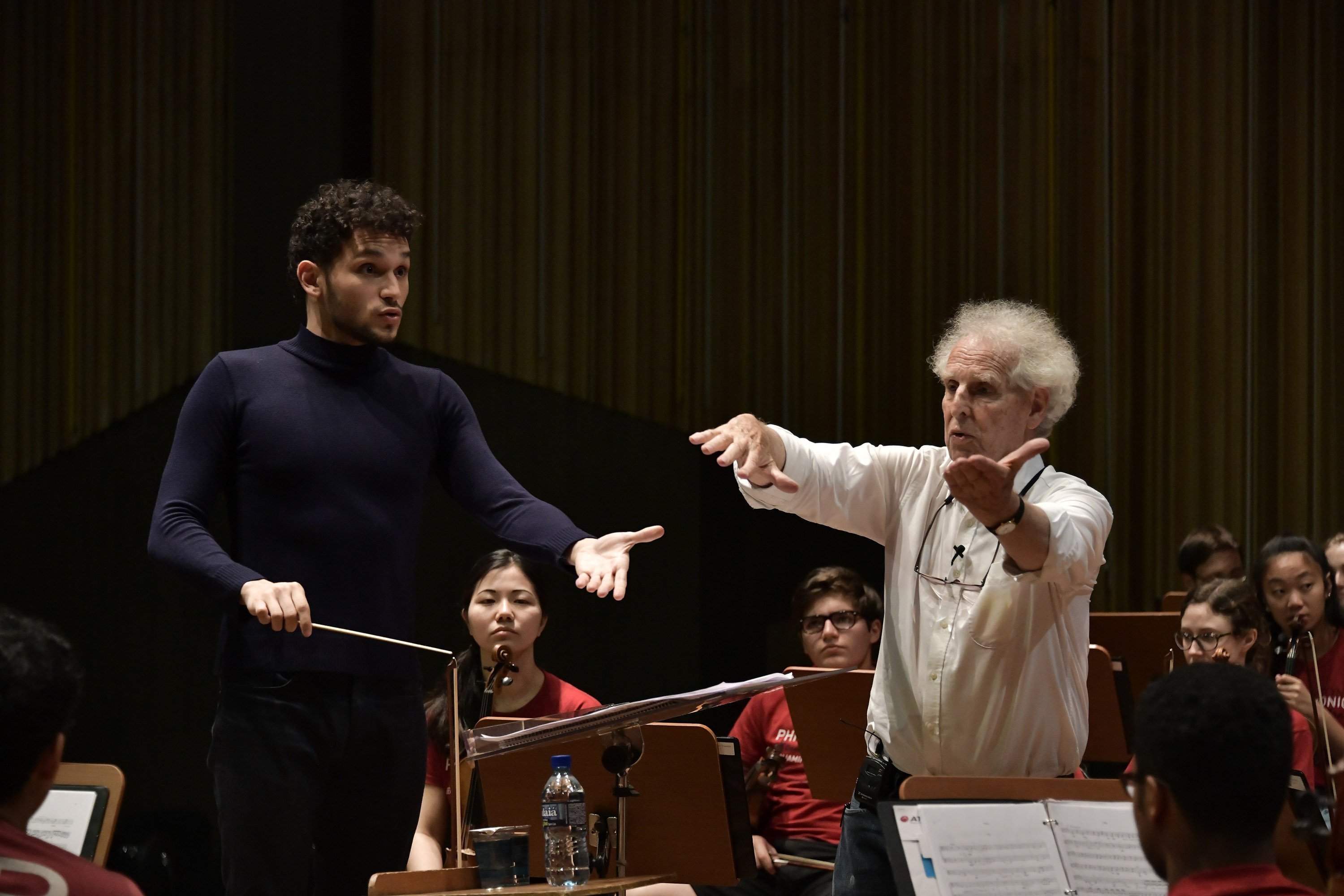
Benjamin Zander leading a conducting masterclass in Campinas
For the masterclass, there were three conductors, the most impressive of whom was the second, a guy named Philippe. From his podium presence alone, you could tell that he’s a gifted musician and a natural conductor. He responded swiftly to all of Zander’s pointers and the BPYO clearly connected with his leadership, playing with much nuance and generosity of spirit.
The side-by-side was like our São Paulo one, with the combined musicians playing through a pair of pieces.
Antonio Carlos Gomes’ Fosca Overture came first. Written by the Campinas native (who was a highly respected figure in 19th-century opera – Verdi and Liszt both considered him a genius), it’s a fetching, tuneful piece that really deserves wider hearing. The orchestra read it a bit tentatively to start but, by the second time through, really began to get the music under their fingers.
Then came “Nimrod,” a piece that somehow never gets old. The second time through, Zander invited Sanghoo Lee, one of the BPYO’s violists, to conduct and he acquitted himself admirably.
Following a quiet afternoon, we reassembled at the hall in the late afternoon for an open rehearsal and the night’s concert. Surprisingly, given the modesty of the theater, this ended up, in terms of energy and musicianship, if not always balance, the orchestra’s best Brazilian performance yet.
They played Dvorak’s New World Symphony for the first time this tour, and the reading was, in the outer movements, full of fire and life. The famous slow one flowed with the utmost naturalness: Cameron Slaton’s melting English horn solos were particularly fine. And the rhythmically-tricky scherzo danced nimbly.
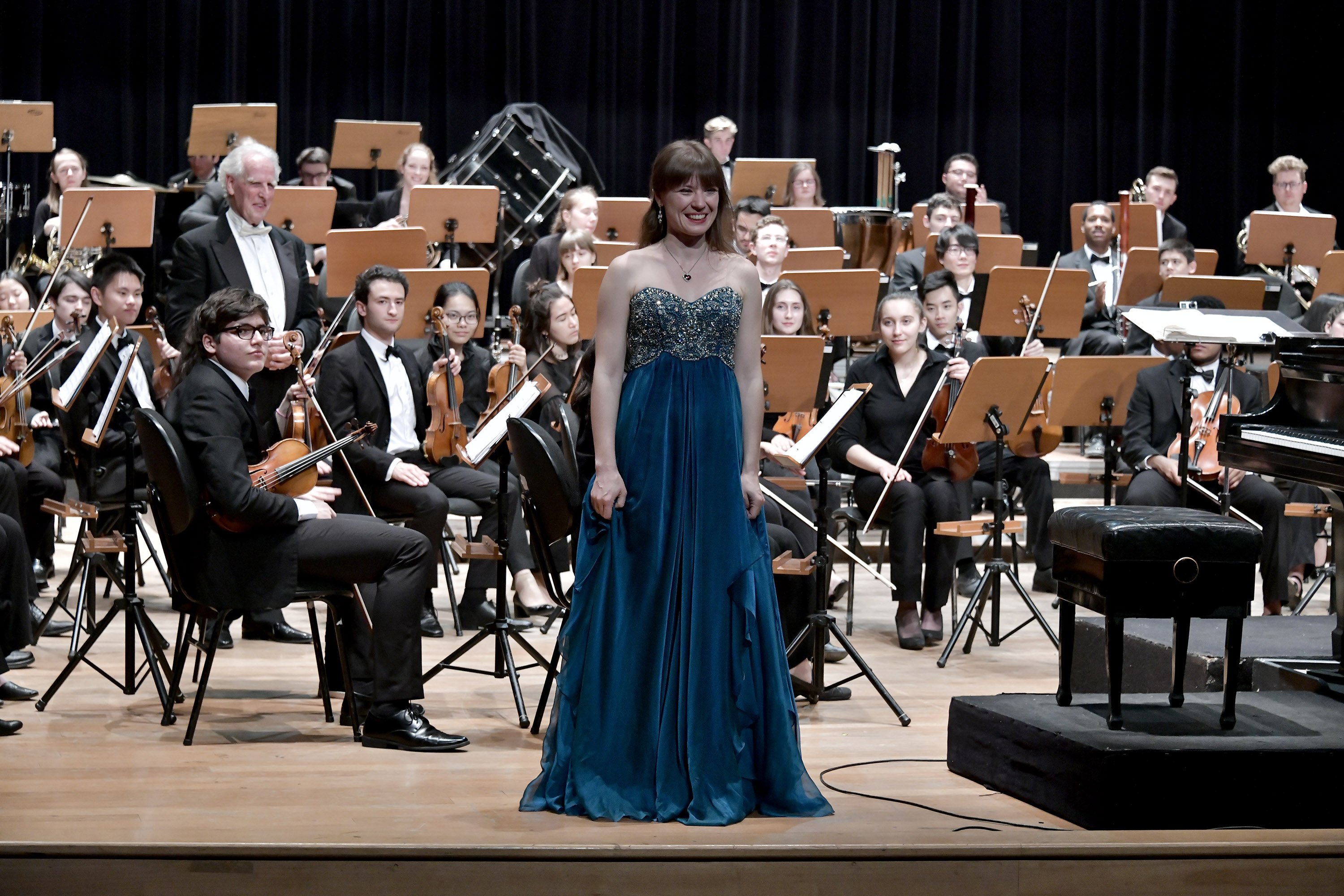
Anna Fedorova taking her bows at Campinas' Teatro Castro Mendes
Fedorova, who only gets better by the day, delivered a terrific Rach Two, her reading full of passion but never getting lost in the music’s virtuosic cascades. She and the orchestra were locked in, rhythmically and expressively, and also very well balanced in the hall: the keyboard playing was never covered in the score’s climactic exclamations.
To open the evening, the BPYO turned in a mighty but lithe account of Wagner’s Meistersinger Prelude. It was roundly invigorating.
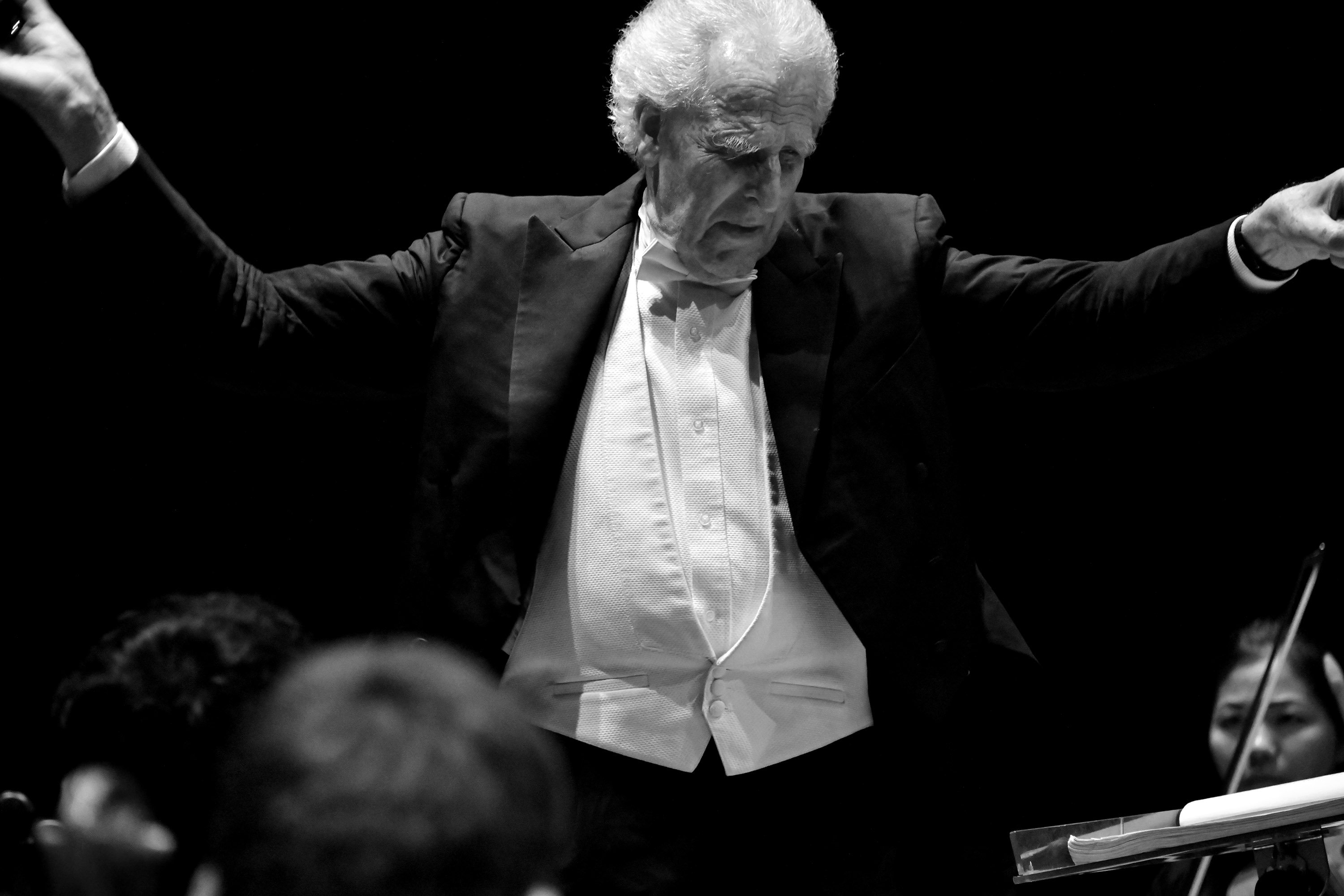
Benjamin Zander conducting the BPYO in Campinas' Teatro Castro Mendes
Our Campinas concert was the first sell-out of the tour (the halls in Rio, São Paulo, and Ribeirão Preto were all very full, though evidently not sold out) and Saturday’s audience was boisterous with their applause. They clearly loved what they heard. In fact, the next morning, Zander received a letter from the mayor’s wife (who’s a music professor at the local university). She said that the concert was the best orchestral performance in Campinas this year, ranking it above visits from professional ensembles from Argentina and Germany.
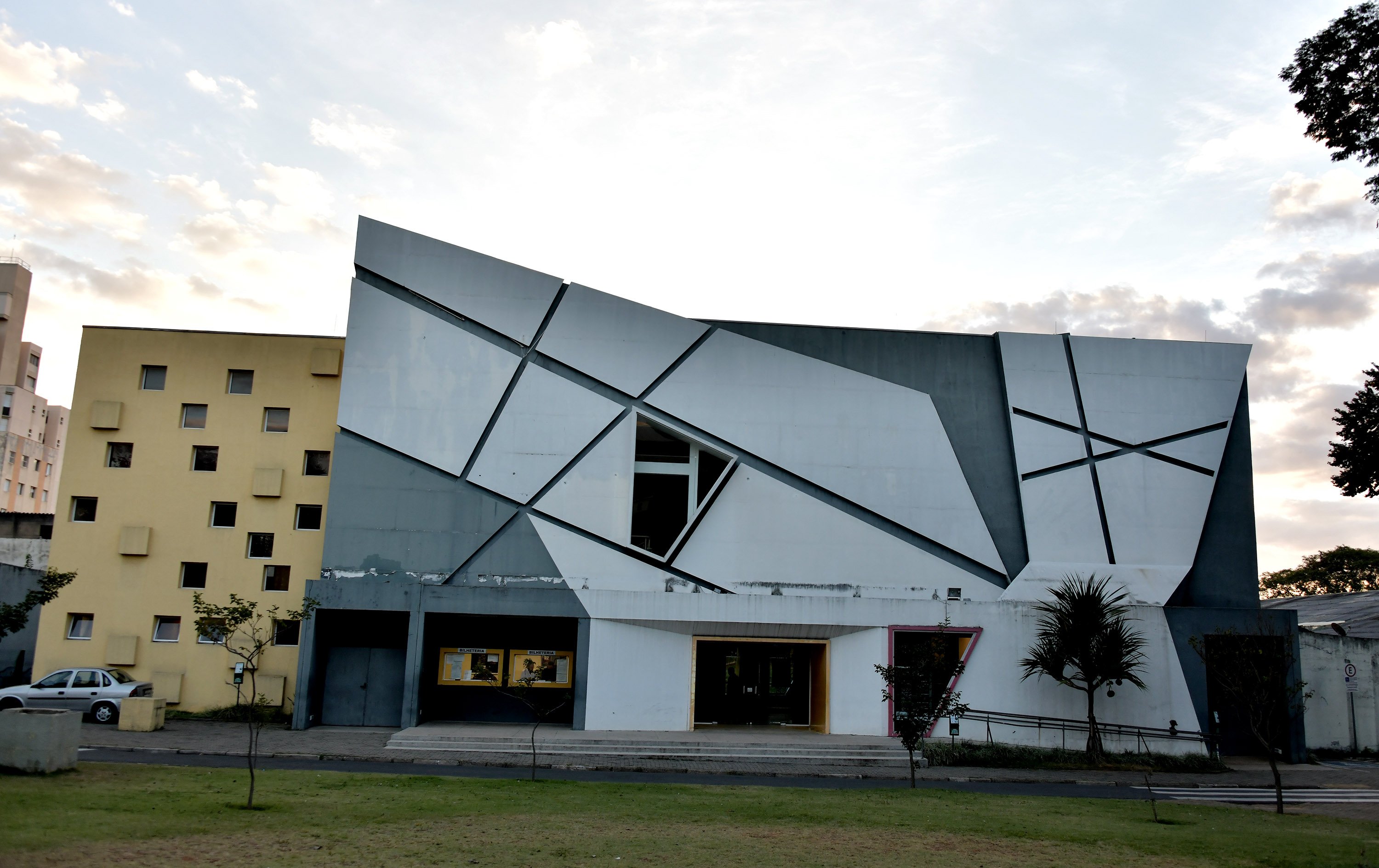
Teatro Castro Mendes in Campinas
Regardless, it was a very happy orchestra that headed back to the hotel and our post-concert ritual: late to dinner, late to bed, early to rise and on to the next city (this time Porto Alegre).
Saturday’s concert was the fifth of the tour’s nine so, now that we’re past the halfway point of our time in Brazil, perhaps some general observations are in order.
The first is that, throughout our travels in this country, we have found, by and large, Brazilians to be unfailingly friendly, generous, helpful, and kind. Whether audiences at concert, students at exchanges, or staff at hotels, the locals we’ve met are among the warmest and most sincere you’ll find anywhere.
A remarkable trait of the culture is how they treat children. Brazilian society makes a point of involving kids of all ages in as many day-to-day activities as possible. Accordingly, you see them almost everywhere and at all hours. They’ve come to our exchanges as well as concerts. Indeed, in Ribeirão Preto, there were at least a dozen children under the age of ten in the audience, all sitting quietly and seemingly engaged in what was happening on stage. It’s as noteworthy and admirable as it is touching.
Brazilians are also massively enthusiastic about music. Not having done a formal study on it, this might be a bit of a generalization, but it seems unlikely that there are many places you can go in the world where a youth orchestra from America will fill halls of 1500+ seats, not once but regularly. Yet that’s basically the story of the tour: we’ve had substantial crowds turning out, and they’ve been loudly supportive and appreciative of the orchestra’s work. (We even made the local news in Ribeirão Preto.)
Another observation: Brazil is an exceedingly beautiful country. We’d gotten some sense of its size and grandeur from the air, but this week’s drive to Ribeirão Preto and Campinas afforded an up-close view of a countryside that’s undulating, lush, and inviting. Like every country, Brazil has its social, political, and environmental problems. But it is a profound pleasure to get to see and experience it in person.
It’s also a real treat to explore Brazilian cuisine. Meat, seafood, poultry, vegetables, breads, desserts, coffee: this is a country that has it all and virtually everything tastes good. (Ice cream has been in somewhat shorter supply for us, but apparently, it’s excellent, too: Ben Zander – an ice cream aficionado if ever there was one – all but swears by it.)
Then there’s the BPYO. As a musical unit, yes, this is an extraordinary group: one of the elite youth orchestras in the world and an ensemble on par with many professional outfits. But to get to spend time with the musicians is, as I’ve noted in an earlier post, really special: they’re a tight group, immensely talented, and endlessly fascinating.
After the concert in Campinas, violinist Ilya Yudkovsky mentioned to me how he often makes eye contact with various members of the orchestra, mid-concert. “You can feel the love between us,” he said. “We don’t say it out loud, but it’s there. It’s tangible.” That statement, I think, goes further to explain the feelings of energy and generosity that mark the BPYO’s playing than any critical analysis I’ve read (or could write).
Still, I’m happy to extol the group’s virtues as much as I can.
As a violist, a particular highlight of the tour for me has been hearing the BPYO’s viola section in action. Granted, there might be a certain implicit bias in saying this but, even if I were more objective, I think it’d be tough to come to a different conclusion: the BPYO boasts a conspicuously fine group of violas who always play with security, strength, and warmth.
They’re led by Mira Williams, a charismatic player from Chicago, and Roger Cawdette. Over the course of the week, I’ve gotten to talk with several members of the section, including Julia Moss, who’s interested in composition and writing about music.
I also had an illuminating conversation at our Campinas hotel with the aforementioned Sanghoo Lee. He’ll be a high school senior this fall and our current tour has been particularly eye-opening for him.
“I didn’t get much meaning out of [last year’s] European tour,” he admitted. “It really felt like there was a divide between the orchestra and our audiences. But the first exchange we had in Brazil” – with NEOJIBA – “changed everything.”
“It made me realize,” he went on, “just how fortunate I am. I come from a family that’s very supportive and I’ve been lucky to have these world-class opportunities. The local musicians, they don’t have the same sort of access, but they poured themselves into their music with so much passion. And we bonded with them playing these pieces together.”
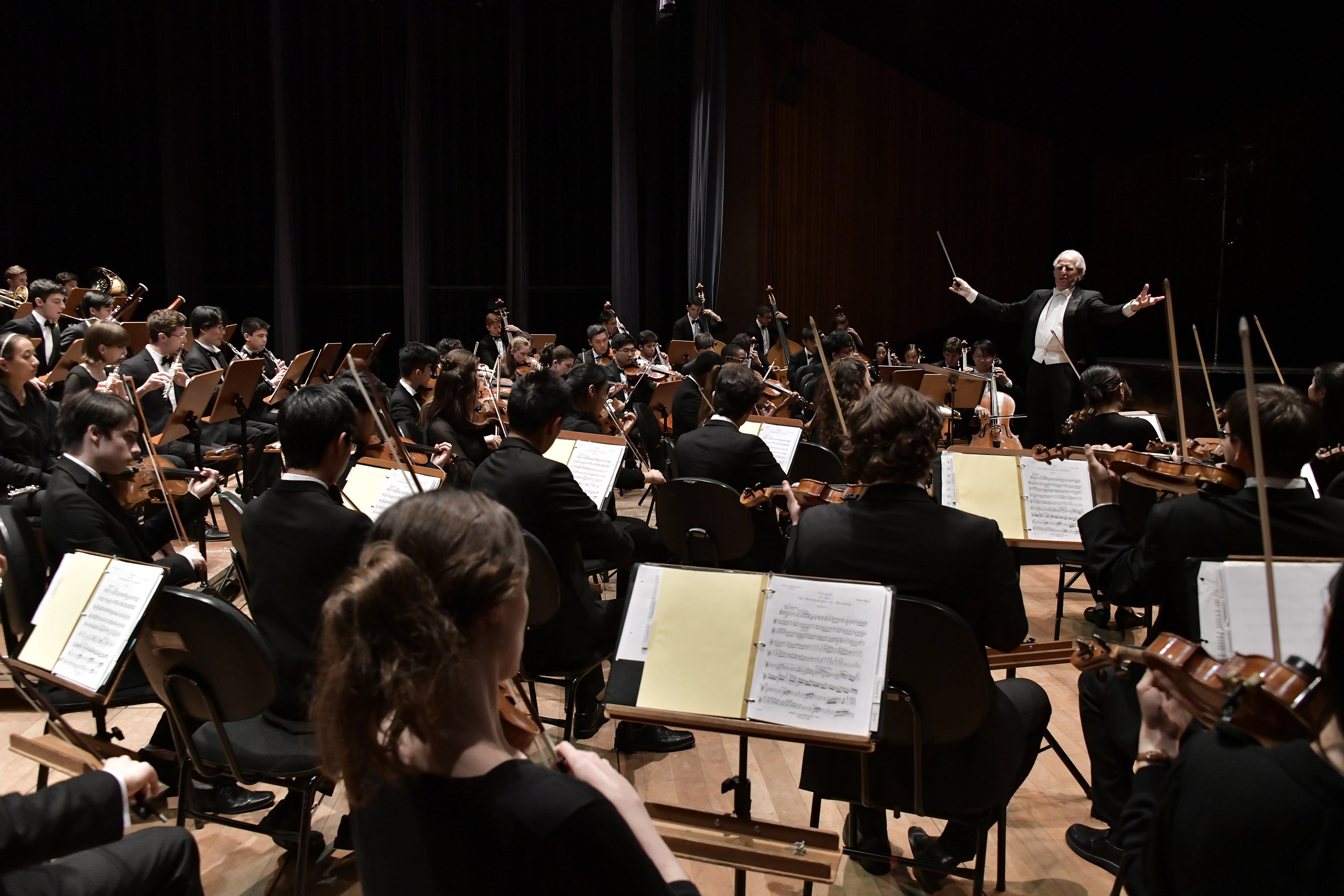
Benjamin Zander and the BPYO in Campinas' Teatro Castro Mendes
Comparing the first two side-by-sides, he noted that the one in São Paulo presented fewer communication problems: more players in that group spoke English. But, in each of them, he made connections with stand partners and section mates, with whom he continues to be in touch over social media.
“I’m coming away from this tour very humbled to be in a position to give something to [the musicians I meet at exchanges] and receive what they have to give,” he says. “The Brazilian musicians we meet, they have kindness, compassion, and a passion for music that they keep alive, sometimes in the face of great adversity. It’s admirable to me how much significance they apply to their own musical education.
“Learning from my stand partners in these exchanges, as well as the conductors in the masterclasses – particularly how they express themselves – have been really important to me,” he continued. “My key takeaway from the masterclasses is that I need to be authentic. And that’s actually making me rethink how I conduct myself personally and musically.”
Looking forwards, Sanghoo articulated his personal philosophy that everyone should be able to have the opportunity to learn an instrument. “Music’s always been an integral part of my life,” he said, “and I want to keep it that way.” So, he plans to make music education one of the focuses of his college studies.
“I’ve learned a lot more from this tour,” he told me, “than I would have at other summer programs. You get a great sense here of how Benjamin Zander operates and that speaks volumes about what music does. These exchanges really gave [this trip] a greater sense of significance for me and it reminded me why music is important and why tours are important.”
Photos by: Paul Marotta
